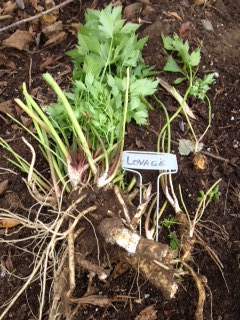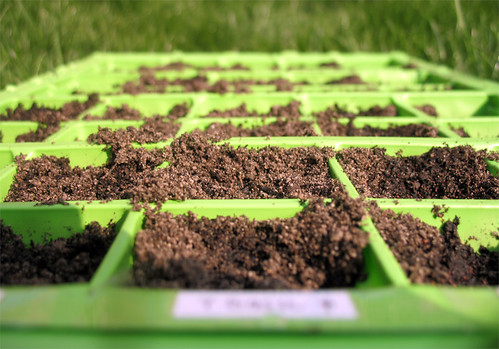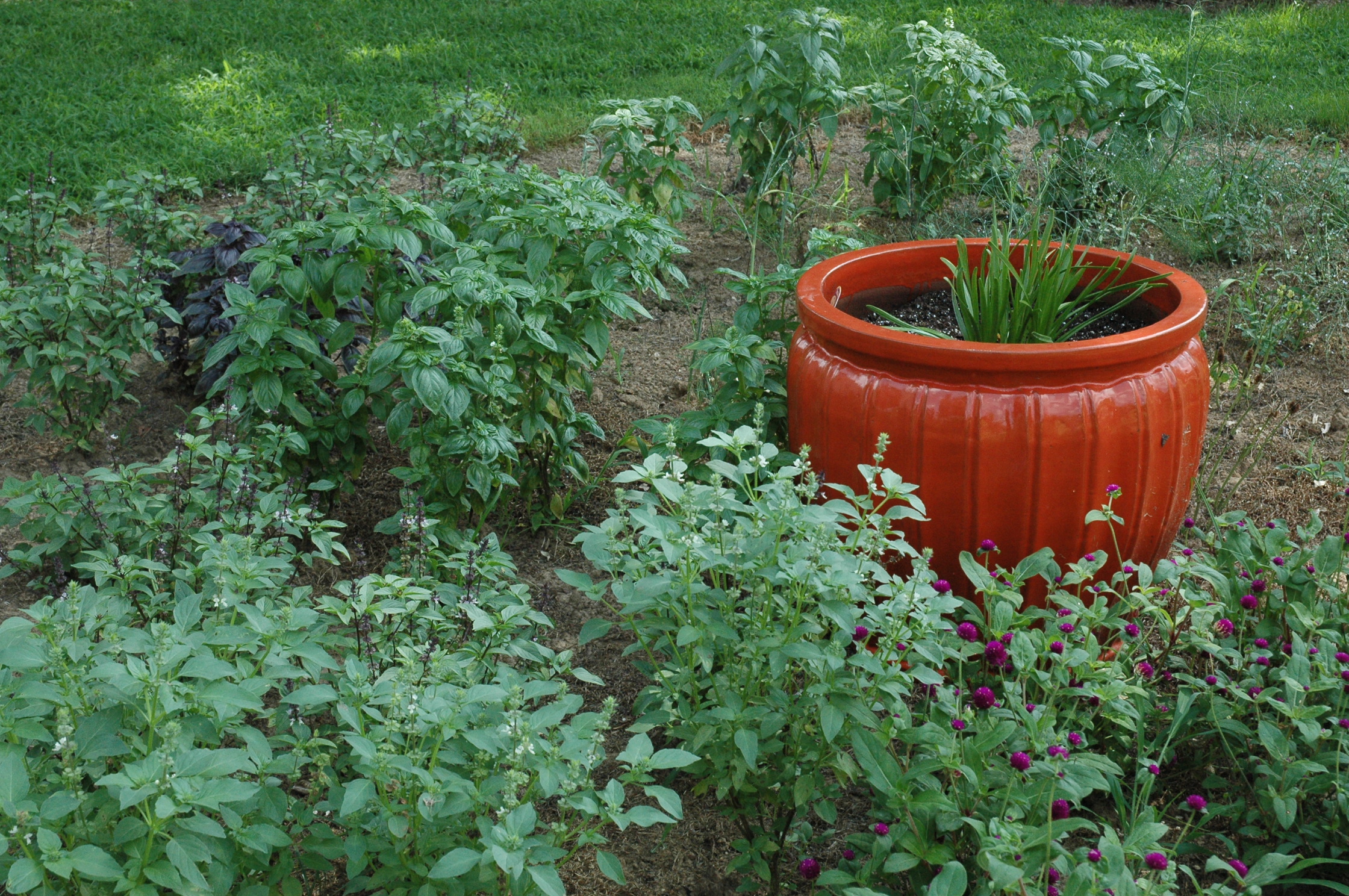
by Briscoe White | Jun 11, 2016 | Flowers, Gardening, Herbs, Inspiration, Life on the Farm |
The sadness of summer fading can only be cured by the excitement of fall.
Cooler temperatures and the bountiful harvest draw our attention away from what was, to the beautiful changes before us. It feels good to bundle up in a favorite fleece for a morning jaunt into the garden. I hope you are making that little jaunt each morning; even ten minutes of trimming, weeding and piddling will brace you for the days work. Think of it as a kind of yoga or meditation practice. After a few weeks of practice, you get flowers and veggies. All that squatting down, reaching around, and scratching in the ground does kind of limber you up, and a few quiet moments looking over your plants does clear your mind, and those veggies will nourish your body and soul. Flowers brighten your day!
Fall is our favorite time to garden
Why would we not start the day in the garden? I don’t know because all of the above is true and we all know how busy and complex life is today. I try to visit my little home herb garden each morning, my excuse is to let the chickens out, but I always piddle and pull a few weeds or pick a little something to leave in the kitchen for dinner. This is a nice start for me because I also know that during the day, through some intrusive media source, word of mouth, or just something I see walking down a city street will give me pause. And I will truly wonder how the human race has gotten thus far. Since there is not much to be done about the world at large, one needs some means of maintaining sanity. The only salvation is a sanctuary, and home with a garden has the deepest roots. Whatever goes on elsewhere, it is grounding to know that the garden is there, orderly and bountiful. (more…)
by Kenan White | Apr 10, 2013 | Life on the Farm |
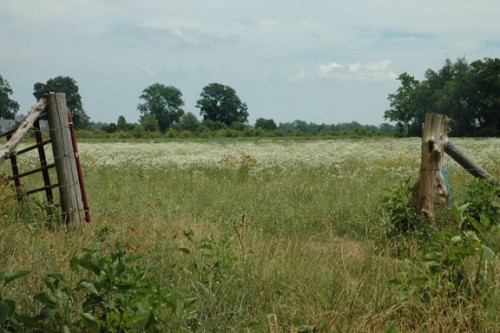
I’ve never actually taken the time to add things up, but I think it’s probably safe to say that over the course of my career, I’ve grown 3 million plants. They’re all for you.
Oh, sure, it sounds impressive, but it’s really a labor of love. It’s what I love doing, and I simply can’t imagine doing anything else. For some people, gardening is a hobby on the side. For me, it’s a way of life.
The truth is, though, I haven’t just been growing plants for you during all of this time. I’ve also been growing and harvesting fruits, vegetables, and ornamentals for my own personal use and consumption.
It goes a bit further than that, though, and lest I risk the nickname “Johnny Appleseed,” I’ve actually been sowing millions of seeds on almost any patch of ground I can find. After all, I’ve had 800 acres to fill for years. It’s a bit tough to tell exactly how many plants I’ve fathered.
I planted 50 acres to help encourage wildlife reproduction of all kinds. Letting plants grow without interference means offering birds, small mammals, and other wildlife the chance to get food for themselves and nurture entire families. It’s literally the chance to build a self-sufficient ecosystem, a chance few people actually take advantage of.
I’ve also replanted former crop land with warm season grasses like prairie grasses and wildflowers, creating beauty where there was once only a clearing.
I’ve already told you that part of the reason behind this planting frenzy is that it’s just who I am, but it’s probably more than that. My plants mean that we have healthier soil and more bountiful wildlife. It means that we have the native pollinators we need to replace the dying honeybees.
We’ve even gone so far as to be part of the CRP program, a federal program that helps farmers use environmentally sensitive land for the benefit of conservation. In fact, we were the first to be 100% compliant with the Chesapeake Bay Act. We took poor cropland out of production and replanted it as a buffer to the James River.
When you take the time to make your next order, it’s fine to imagine me as Johnny Appleseed. I’m endlessly collecting and planting seed all over the farm, and I guess I always will be.
by Kenan White | Jan 24, 2013 | Gardening, Growing, Herbs, Life on the Farm, Seeds |
The Delta-T heating system we purchased will deliver heat where it matters most to plant development, the root zone. Everyone knows that a healthy plant must have a healthy root system. To insure all Growers Exchange herb plants fill their pot with vigorous roots, we will keep soil temperatures at 65 degrees to stimulate rapid root development.
To keep the green plant tops from growing too quickly, the air temperature in the greenhouse will be at 50 degrees at night. Growth is slower at cooler temperatures so the stems are thicker and stronger. The stem length between nodes is shortened, creating a symmetrical plant.
Bottom heat will also allow us to propagate more plants from cuttings. Many herbs like rosemary, lavender, and mint are best increased by vegetative propagation, also known as cloning. A mist system keeps the non-rooted plant stems hydrated until the warm soil promotes root growth. In about a month a new plant is ready to be re-potted.
Tropical herb plants like Lemon Verbena, Lemon Grass, Vietnamese Coriander, Dill, and Basil will also benefit from the new bottom heat. Try as we do, some days we can only keep the greenhouse but so warm. Wood fired space heaters warm the greenhouse air; but some winter days only so much heat is possible. We could also consider stone flooring that promotes underfloor heating and is able to retain heat well, allowing the plants to stay warm even when it’s cold outside. The bottom heat system, however, will act as a great attachment to the other options ensuring that our plants stay in their optimal temperature zones. Now we will be able to keep the root zone of these tropical herbs at their desired 65 degrees no matter what is happening outside.
As greenhouse growers, this new bottom heat is as exciting as Christmas! We will have plenty of herb plants ready for spring planting. The bottom heat helps the seedlings prepare for Spring. Winter is the best time to plan your herb garden. Don’t forget to order early, many herb plants are grown in limited quantity. And a tip from a greenhouse grower: have plants sent as early as your planting zone allows.
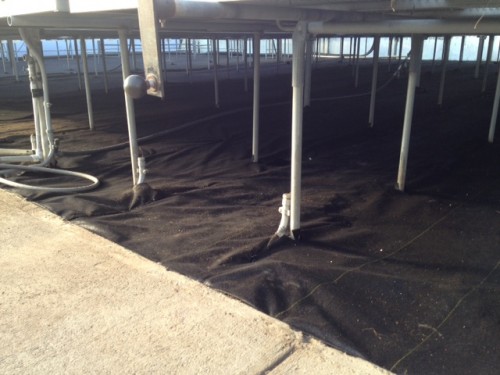
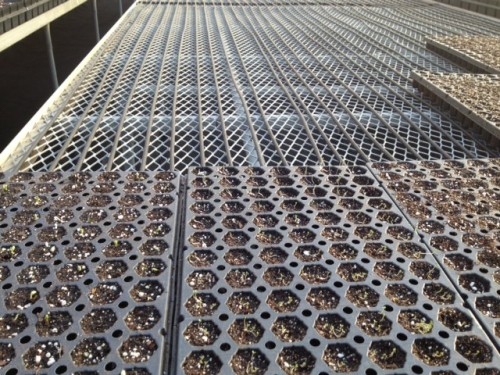
by Kenan White | Nov 12, 2012 | A Year in the Life.., Gardening, Life on the Farm |
The Growers Exchange herb garden is under going it’s fall make over. Most of the annuals have been removed: several frosts left basil looking limp. Fall is the best time to move and divide perennials. Having substituted all the flowering plants with herb plants, we must study their garden characteristics just as with plants grown strictly for flowers.
The border along our office wall needed a new screening plant at the back of the bed. We were looking for a tall green plant to high light the shorter herbs growing in front. We could have easily chosen fennel in green or bronze to block the white wall, but they are already being used are center specimens in island beds. Lovage is another plant with potential for screening.
The lovage in the photo was dug from another place in the garden. Along with the main clump, we divided off four smaller plants. These will be set out to catch up with the parent. If needed, the main clump could have been divided again into four or five smaller plants. In this case we wanted one large plant. If you have a lovage plant that requires moving or dividing, fall is the best time. The plant will establish roots until the ground freezes; this will produce a larger plant the following spring. To promote root growth an organic fertilizer should be applied.
by Kenan White | Sep 28, 2012 | Basics, Gardening, Growing, Herbs, Life on the Farm, Seeds |
There is nothing easy about growing white sage; beginning with its seeds. White sage seeds are tested to a germination rate of twenty percent. Seed with this low of a germination rate are considered too old to use! Being a desert plant, white sage seeds will germinate in a few weeks or 80% will wait for six months to a year, maybe many years. This adaptation insures some white sage seeds will be ready for the next rain, even if ten years away!
This survival strategy is great for the desert, but makes germination uncertain in a greenhouse. Our cell trays are not a help, because we end up with dead cells or ones with too many seedlings. To insure a strong crop of white sage for the spring 2013 season, we resorted to an old fashion method of sowing seed. This means each and every seedling must be carefully transplanted to a cell. Being a species plant, there is wide variation in seedling size.
We carefully plant like sizes together. Watering is always the issue with white sage, well drained potting soil or garden soil with sand added are necessary. Wet soil can cause root rot quickly, never let white sage stay in wet soil!
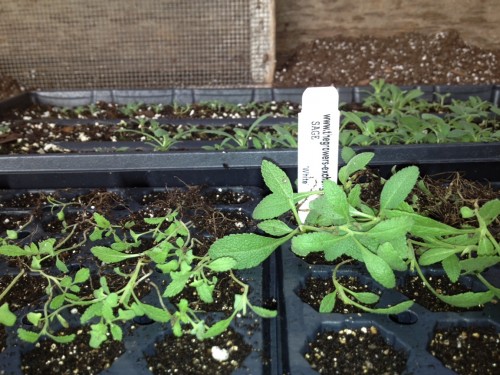
by Kenan White | Sep 19, 2012 | Basics, Gardening, Growing, Herbs, Life on the Farm, Seeds |
Growing herb plants presents many challenges. Almost all are species plants and have their own requirements for germination, growth, and peaceful establishment in someone’s garden. When The Growers Exchange decided to grow only herb plants, we quickly found ourselves pretty much all alone in our commercial greenhouse community. When growing more common plants, we could always call around and find extra plants when needed.
Not so with many herb plants! Finding fresh seed for basil, cilantro, parsley, and all the popular culinary herbs is easy. But if we run out of plants, our neighboring greenhouses will be full with geraniums and other flowering plants. If we run out, then we are out! But this inconvenience is small compared to consistently finding seeds for the less known herbs such as White Sage and Holy Basil. Only a few seed companies sell rare herb seeds. Once certain seeds have been located, they must also be viable. Meaning they must be fresh enough to germinate.
Finding fresh seed for rare herbs is always chancy, and we watch closely to see that we can try again if a batch fails to germinate. To even the odds that we sow fresh viable seed, we have grown our own herb plants in a garden next to the farm office. Seeds are harvested and dried in an old smokehouse. We still must buy seeds, but we also have the seeds we grew, which are very fresh. This doesn’t solve all the problems, but helps plenty and gives us a proactive way to keep a fresh supply of seeds.





